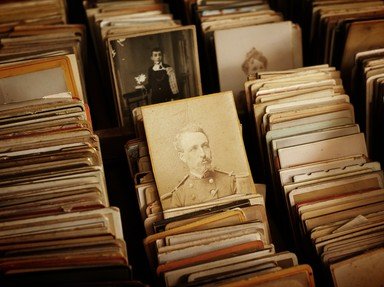Quiz Answer Key and Fun Facts
1. While his name is synonymous with ultimate luxury in the automobile world, his first properly working horseless carriage was a basic car that putted down the manure-filled streets of Munich in June of 1885 on only three wheels.
Who was this German automobile engineer whose Patent Motorwagen became the first salable self-propelled motorcar?
2. During her lifetime, she was mocked for her decision to live an unmarried life and was described as "personally repulsive" in print. She was attacked by society because her fight for women to have the right to vote was seen as immoral conduct, and she was even arrested for having the gall to vote in a Presidential election.
Who was this American suffragist who co-founded the National Woman Suffrage Association and eventually became the first female to appear on a denomination of American currency?
3. In her youth, she was immersed in Enlightenment thought and grew to despise despotism, yet she eventually became an absolute ruler. Her support of education for Russia's children and her courage to risk a smallpox inoculation to set an example for her subjects demonstrate her compassion; however, she took power by having her husband Peter III arrested and then perpetuated a harsh system of serfdom.
Originally known as Princess Sophie, who was this enlightened despot who drove the Russian Empire to its Golden Age of power and influence throughout Europe and Asia?
4. Achieving both fame and infamy for his support of religious and civil liberties, this English theologian and Protestant preacher championed the foundation of the Unitarian Church as well as the causes of French Revolutionaries. However, it is his work in the fields of natural science and experimental chemistry for which he is most remembered.
Which eighteenth-century English scholar and scientist discovered through his experiments with mercuric oxide a colorless gas that would one day be called "oxygen"?
5. Along with those of Albert Einstein, this man's speculations helped form the basis of modern physics. In fact, he won the Nobel Prize in Physics in 1918 for his defense of the existence of a universal constant that placed a finite value on the dimensions of the subatomic world, meaning time and space have units at some level that cannot be divided into smaller units.
Who was this German theoretical physicist whose law of black body radiation and subsequent discoveries led to the origins of quantum theory and the uncertainty principle?
6. While fighting a profitless battle for the patent rights to an engine that separated cotton fibers from their seeds, this American inventor and entrepreneur began focusing on his musket factory. There, he standardized the manufacture of parts and created a rudimentary "line" in which workers assembled rifles repeatedly by fitting together those standardized parts.
Who is this eighteenth- and nineteenth-century American who invented the cotton gin but much more significantly developed the idea of interchangeable parts and set the United States on the road to industrialization?
7. Initially, this twentieth-century European leader seemed to desire only to be an electrician, but fate and his concern for his fellow workers at the Lenin Shipyard in Gdansk, Poland, led him in other directions that would help lead to the fall of Russian communism.
Who was this Polish citizen who became a trade union activist, co-founded Solidarity, and presided over Poland's transition to a non-communist nation as only the second inidividual to serve as its president?
8. You can see this architect's style in palaces, churches, and villas throughout Europe. You can see it in the United States' Capitol Building and the White House. You can even see it in European and American homes with the three-part windows (with the tallest center one rounded at the top).
Who was this simple Italian Renaissance mason who rose to historical prominence after he was hired by a poet and scholar who introduced him to humanist thought and culture? (Think of that name for the three-part windows, buddy).
9. This medieval Sephardic Jewish philosopher and polymath left Córdoba at thirteen to travel to Egypt so that he and his family might escape Islamic persecution. Eventually, he found safety in the court of the more tolerant Saladin. A merchant of jewels, he began to focus on being a rabbi and a physician after his business partner and brother died at sea.
Who is this twelfth-century rabbi of reason whose ideas influenced Western philosophers such as Thomas Aquinas and whose commentaries on Jewish law have continued to influence rabbis to this day? (His name begins with the same first syllable as the Tai cocktail).
10. Playwright, novelist, poet, natural philosopher, scientist, diplomat, civil servant, lawyer, and military advisor--what did this man not do? Hegel, Schopenhauer, Kierkegaard, Nietzsche, Jung, Emerson, Mozart, Beethoven, Mahler, Wagner, Napoleon, Darwin--whom did this man not influence?
Who was this German polymath and literary genius who lived from 1749 to 1832 and wrote such masterpieces as "The Sorrows of Young Werther", "The Sorcerer's Apprentice", and "Faust"?
Source: Author
alaspooryoric
This quiz was reviewed by FunTrivia editor
bloomsby before going online.
Any errors found in FunTrivia content are routinely corrected through our feedback system.
